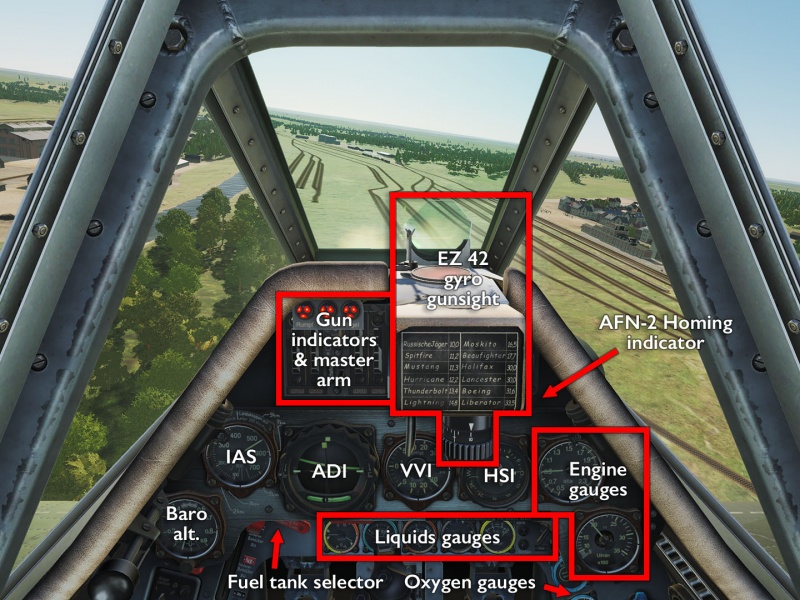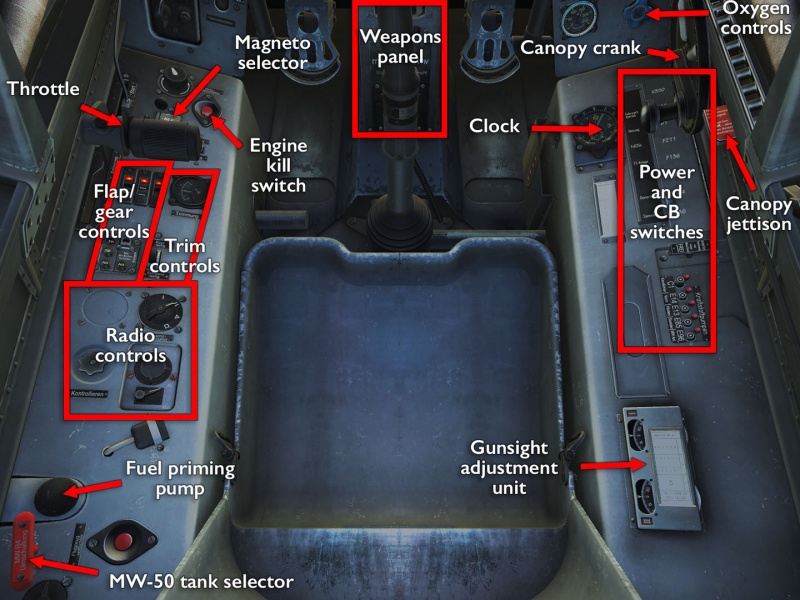Fw 190 D-9 Dora: Difference between revisions
mNo edit summary |
m (→�) |
||
| Line 14: | Line 14: | ||
* 2× 13mm machine guns and 2× 20mm cannons for making holes in things. | * 2× 13mm machine guns and 2× 20mm cannons for making holes in things. | ||
* Bombs and rockets to make bigger holes in bigger things. | * Bombs and rockets to make bigger holes in bigger things. | ||
* Only elevator trims, still. | |||
Comes with the built-in [[Built-in_Campaigns#Fw_190D-9_Challenge_Campaign|Fw 190D-9 Challenge]] campaign. | Comes with the built-in [[Built-in_Campaigns#Fw_190D-9_Challenge_Campaign|Fw 190D-9 Challenge]] campaign. | ||
Revision as of 19:09, 9 July 2018
While not entirely obscure, the Fw 190 certainly exists in the shadow of the Bf 109, simply by not being connected to as many famous battles and campaigns. Nevertheless, the Fw 190 — and certainly the upgraded D-9 “longnose” Dora represented in DCS World — was intended as a replacement of the ageing 109, and came as a nasty surprise when it did even if the timing of the introduction and the ever-increasing pressure from the allied air incursions deeper and deeper into occupied Europe meant that the older fighters had to be used until the end.
The fact that the Fw 190 D-9 is an upgrade, through and through, is evident even at first glance. It removes a number of kinks in the 109's flight dynamics and significantly cleans up the cockpit environment, presenting a very neat interface to the pilot to a degree that even many later aircraft would not match — just compare the Dora's cockpit to the cluttered F-86F dashboard or the dial-shotgun design of the MiG-15bis. In many ways, this mirrors the quick evolution seen between the older design sensibilities that went into the Spitfire and the more modern ones found in the Mustang: two different generations of aircraft, both rolling out new variants at a rapid clip and but also turning the lessons of the old into core design principles for the new.
Features
The Fw 190 D-9 improves on the pilot's life by having:
- A very user-friendly cockpit layout, including colour-coding of dials to quickly find the right read-out in a hurry.
- An equally user-friendly wide stance on the ground, for good stability and steering at all speeds.
- The MW-50 water-methanol booster system to get more emergency power out of the engine.
- 2× 13mm machine guns and 2× 20mm cannons for making holes in things.
- Bombs and rockets to make bigger holes in bigger things.
- Only elevator trims, still.
Comes with the built-in Fw 190D-9 Challenge campaign.
Flying the Fw 190 D-9
While there are clear parallels between how the more modern Fw 190 D-9 improves on the design sensibilities of the older Bf 109, that parallel goes all non-euclidian when looking at the flight dynamics. The leap forward from the agile, clean-flying (if not always reliable), but clumsy on the ground, Spitfire was the P-51, which was easy to handle on the ground and more reliable in the air, but whose added speed and power in the air made it more difficult to actually fly. On the German side, the upgrade path was fare more clear-cut: the 109 was a handful on the ground, much like the Spitfire, and could also be a handful in the air to the speeds it could attain, and the Dora, was an improvement on both fronts.
The Fw 190 D-9 gets rid of the snap-roll, back-flip tendencies of the 109 on take-off, and also improves ground handling in how the tail wheel is locked. The wider gear arrangement makes both take-offs and landings less wobbly over all. In the air, the design focus had not been so much on achieving excessive speed as on reliability, visibility, and manoeuvrability. It is still not exactly slow, especially since it retains the MW-50 system, but it is rather a more balanced approach than one that pushes itself into high-speed stalls and compressibility issues.
Cockpit overview
Getting into the air
Shooting something
Links and files
- Vehicle Size Chart for sight adjustments.
- Chuck's Fw190D-9 Dora guide.
- DCS: Fw 190 D-9 Dora in the DCS shop.
More information
- Focke-Wulf Fw 190 on wikpedia.
- Bunyap's Test Flight - DCS: Fw 190 D-9 Dora video series.
- Taming taildraggers — an essay, Part 1, Part 2, and Part 3.




